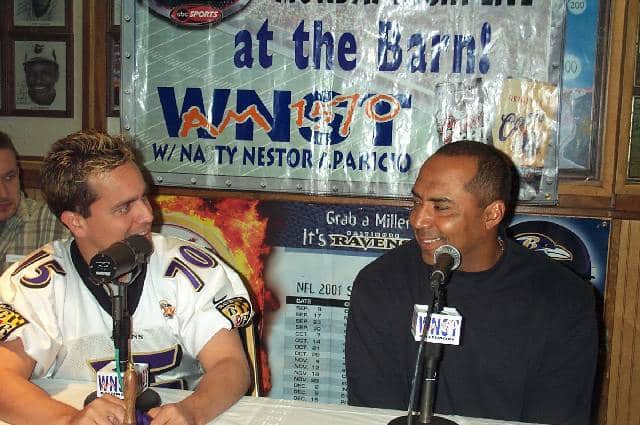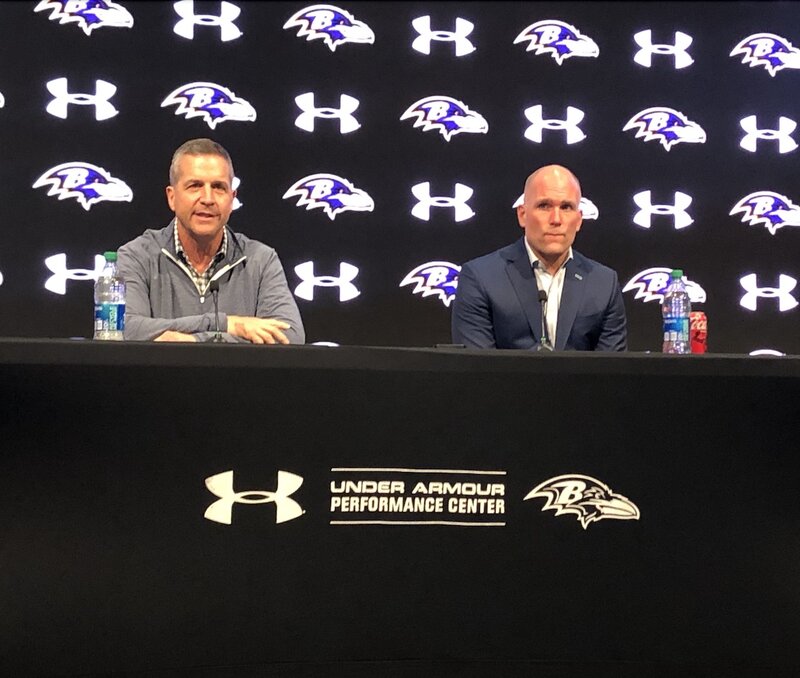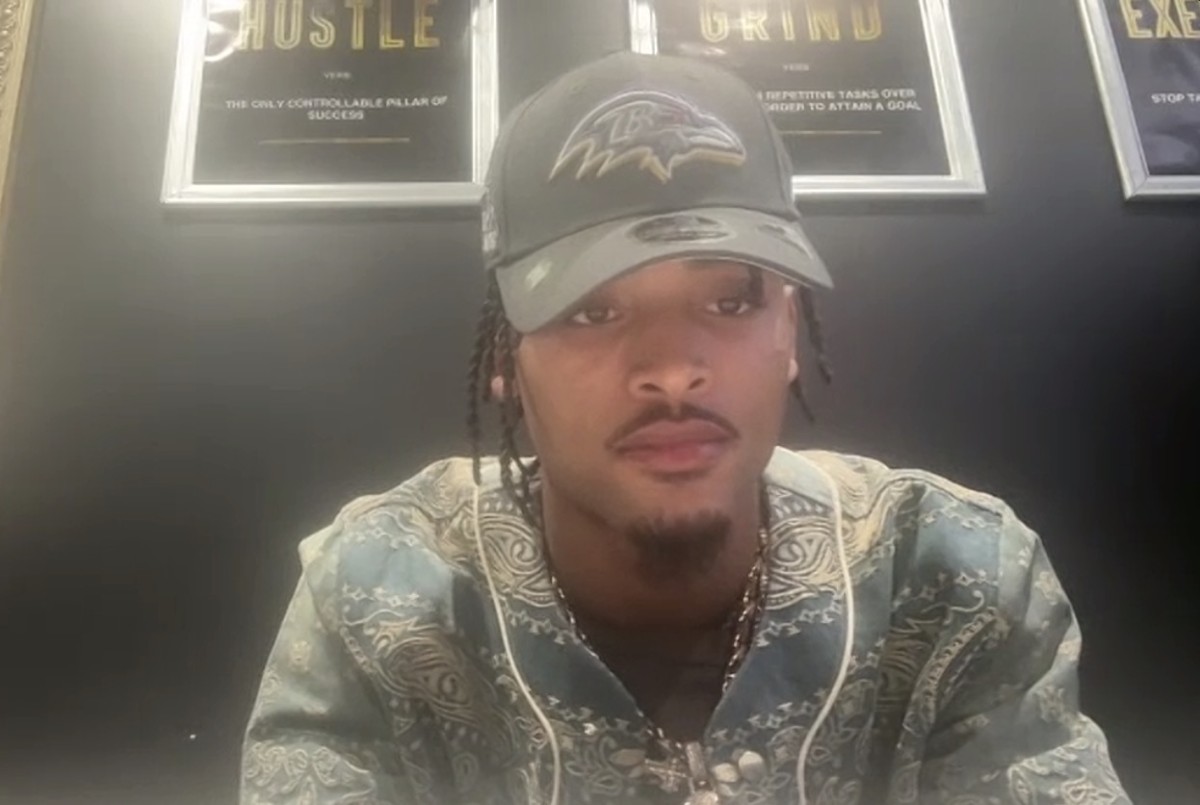Billick meant business. No more Bam Morris. No more Ralph Staten. No more Michael Jackson bitching day after day in the clubhouse. If you weren’t part of the solution, you weren’t going to be around long enough to be part of the problem.
Billick didn’t just go on the offensive inside the clubhouse. He took on the role of team spokesman – a role that Art Modell relished for more than 35 years — and played hard ball publicly with players who didn’t fall into line with the team’s contract philosophies.
When defensive lineman Michael McCrary walked out of Billick’s first training camp in a contract dispute, Billick said that the team wouldn’t be held hostage. No one in the organization would speak to McCrary or his agent until he got his ass back into camp. The following summer, after a protracted negotiation with defensive tackle Tony Siragusa, Billick again played the public heavy. Siragusa claimed a public victory and the team, despite truly winning the private dispute in a knockout, allowed the big guy his pride.
The team even built its marketing around its new coach, slapping billboards throughout Baltimore that simply said, “BILLICK.” Here was a guy who hadn’t won a game in the NFL and had never been a head coach of a Pop Warner team, yet a legend was being made for his first training camp in 1999.
Billick made his way onto the banquet circuit the first year of his coaching tenure in Baltimore and had a polite way of handling his celebrity and the expectations put upon him as the spiritual leader of the football community. But he knew very early how important football was to Baltimore and of his own significance in the town.
One of Billick’s favorite roles upon coming to Baltimore was sitting in on the monthly board of a group of corporate leaders in a CEO interaction group, which included the newly elected Mayor of Baltimore, Martin O’Malley.
O’Malley, an engaging and energetic sort who knows more about music than he does about football, once told the gathering of about 50 people – all the movers and shakers in the Baltimore business community – that he thought that by becoming mayor he would get to call at least one play for the Baltimore Ravens during Billick’s first season.
Billick, upon taking to the podium later in the session, said, “Marty, if I win the Super Bowl here, they’ll elect me Mayor.”
And this was before Billick ever called one play as head coach of the Ravens.
Perhaps the most important decisions Billick made at the beginning of his tenure were about staffing. He was going to call the plays initially but he needed the right offensive coordinator. He was inheriting a young defense that was improving, but who was the right guy to take the team to the next level?
“You always have relationships around the league that you form through the years,” Billick said. “You always think, ‘If I got that job who would I take with me?’ Then, in the real world, when you get the job it becomes more like, ‘Who’s available?’ and ‘Who’s realistic?’ ”
Many pieces fell quickly into place:
- Matt Cavanaugh had just left the Bears and was a former 49ers guy and a respected, longtime backup quarterback in the league. He would be the offensive coordinator and quarterbacks coach.
- Wade Harmon was an offensive assistant in Minnesota and longtime confidant of Billick from his days at Utah State in the 1980s who would follow him east. He would coach tight ends and be an offensive line assistant.
- Milt Jackson had 21 years of experience in the NFL in 10 organizations and Billick had known him nearly as long. He would control the wide receivers.
- Matt Simon had a history of head coaching at the collegiate level at I-AA North Texas but was an NFL neophyte who needed a break. Billick named him the running backs coach.
- Jim Colletto was a long-time collegiate coach taking his first NFL assignment after working at Arizona State, Ohio State, Purdue and Notre Dame. He was a brilliant offensive mind.

The biggest questions for Billick came on defense, where he would not be personally spending a lot of time out of the gate molding the unit.
He had two names at the top of his defensive coordinator wish list. They were – in order – Kansas City’s Gunther Cunningham, who was up for a promotion to the head coaching job there after Marty Schottenheimer had stepped down, and Marvin Lewis, who was not officially retained during the Marchibroda purge of the previous month.
Not only was Cunningham waiting around in Kansas City, he was also being contacted by George Seifert in Carolina about working as a defensive coordinator there. Marvin Lewis had two firm offers: Carolina, as well as Andy Reid’s new staff in Philadelphia, if Baltimore didn’t work out.
Lewis made it no secret that he didn’t want to clean his desk out in Owings Mills. But Billick didn’t even know Marvin Lewis.
“I had heard a lot of good things about Marvin,” Billick said. “I knew he was competent. I had just played his defense a few weeks earlier in Baltimore. But we had no history.”
Instead, Billick sought input from the people he trusted in football who knew Lewis. He also sought the opinion of Vice President of Player Personnel Ozzie Newsome, even though he had it clearly written in his contract that he had full control over the staff he would hire.
“I liked Marvin from the minute I met him,” Billick said. “I saw his intelligence immediately and I thought the continuity would be important. Even having the same terminology with the young guys would benefit us.”
When Cunningham was hired as head coach in Kansas City, Billick found a nice compromise: Hire Lewis and surround him with other Billick guys.
“When I hired Marvin I knew the staff I could put around him would challenge him,” Billick said. “Why are we doing this? Why will this work like this? It would help him to keep refining his system. They could all bring something to the table, challenge each other, MF each other and then, eventually, fall in line.”

Billick, trying to blend the predominant defensive philosophies of NFL football from guys who had worked in the systems of the legends, assembled his staff:
- Rex Ryan was named the defensive line coach, bringing his father Buddy’s schematics and philosophies with him. “No one knows the 46 (defense) better than Rex,” Billick said.
- Jack Del Rio would handle the team’s youthful linebacking corps. Del Rio came from the Tony Dungy-Monte Kiffin school of defense and had a player’s mentality because he had been in the league himself as recently as 1994.
- Steve Shafer was named Billick’s assistant head coach and leader of the secondary, which would be where the team needed the most help initially. He had been coaching NFL defensive backs for nearly 20 years. Shafer had coached with Billick at San Diego State in 1981, so there was a lot of history there. Shafer brought the philosophies of Fritz Shurmur and Dom Capers, having worked in their systems over the years.
- Donnie Henderson, a Baltimore native, came home to work with Shafer in the secondary unit and Billick knew him from Utah State in the mid-1980s.
- Mike Smith was a paperwork guy, named defensive assistant for the defensive line. Smith would coordinate game plans, playbooks, scouting reports and work with the statistics that would analyze opponent’s tendencies. He worked with Billick at San Diego State in the mid 1980s.
- Russ Purnell came from the Tennessee Titans after working a decade with the Seattle Seahawks. He would be the special teams guru on the new staff.
With a staff in place, fans and media in tow, Billick set out to work with Newsome in bringing in the proper personnel to the Ravens so he could win.
His first charge: finding a quarterback.
This was the right man for this task, the conventional wisdom said. Billick was the “quarterback guru,” having either started or resurrected the careers of Jim McMahon, Warren Moon, Brad Johnson, Randall Cunningham, Sean Salisbury and Jay Fiedler.
He immediately spotted Brad Johnson as a prospect, having just left Minnesota where Johnson played a well-paid second string and knowing the Vikings were not cap-equipped to keep Johnson and the league’s resuscitated MVP in Randall Cunningham.

































